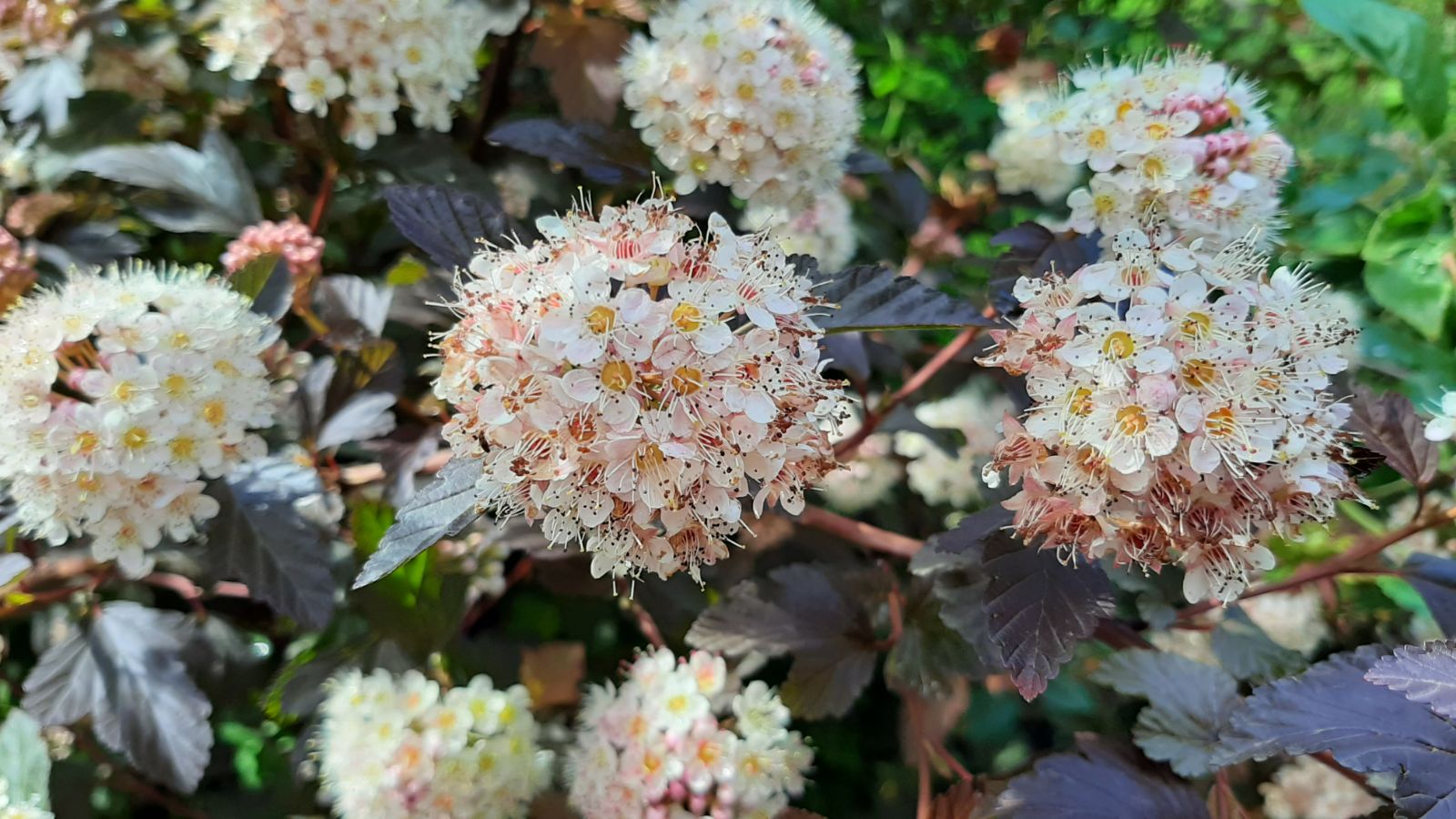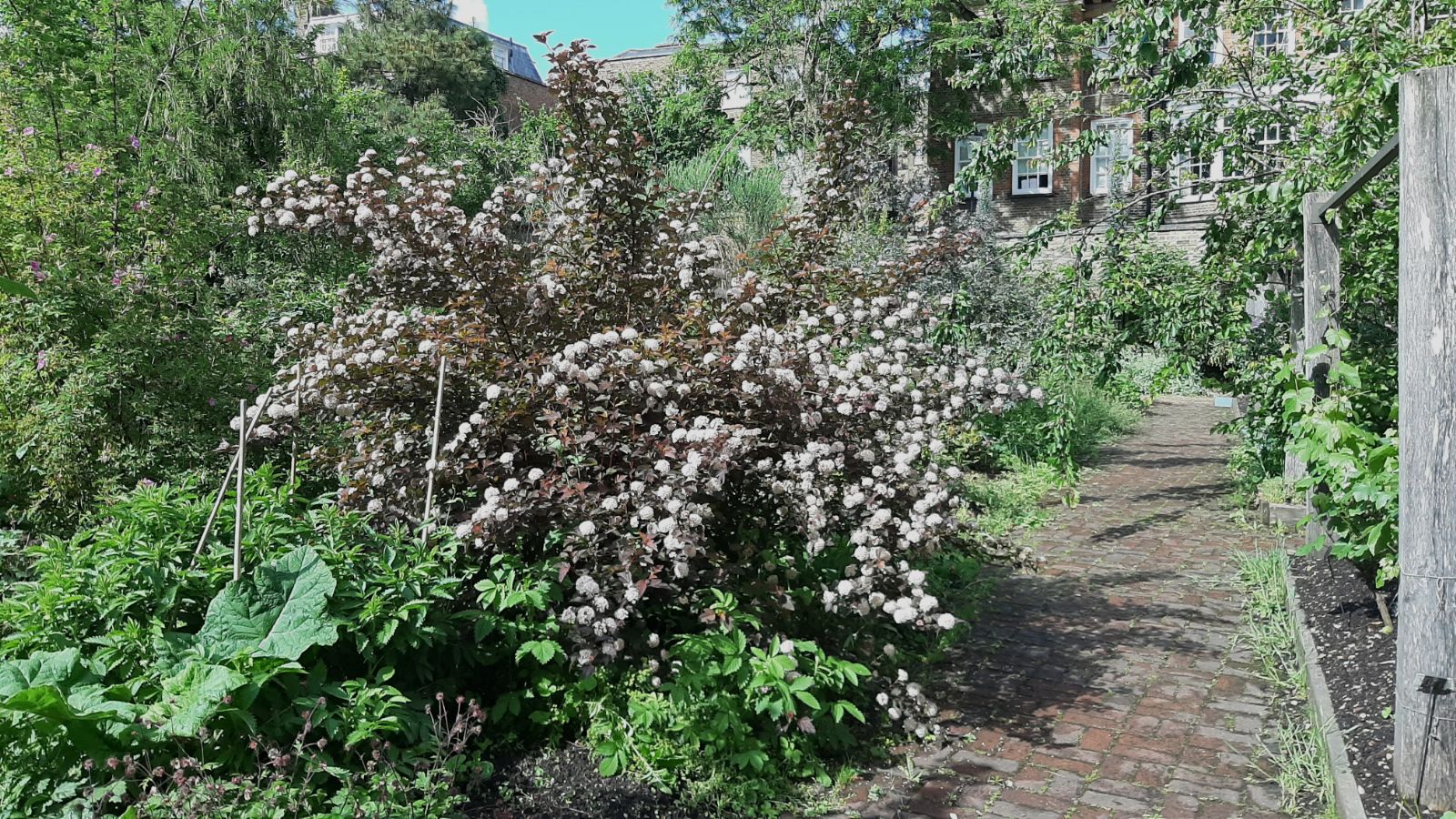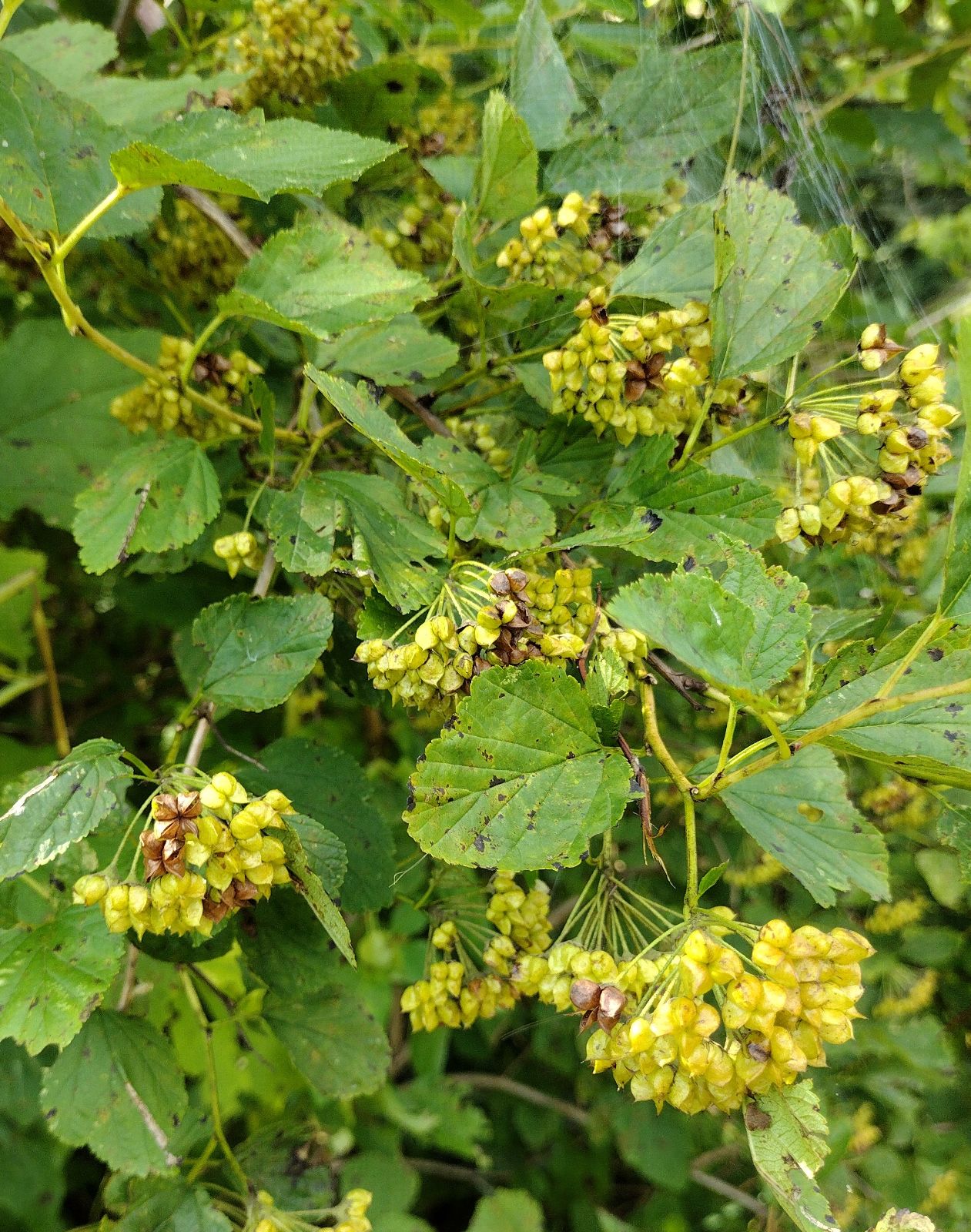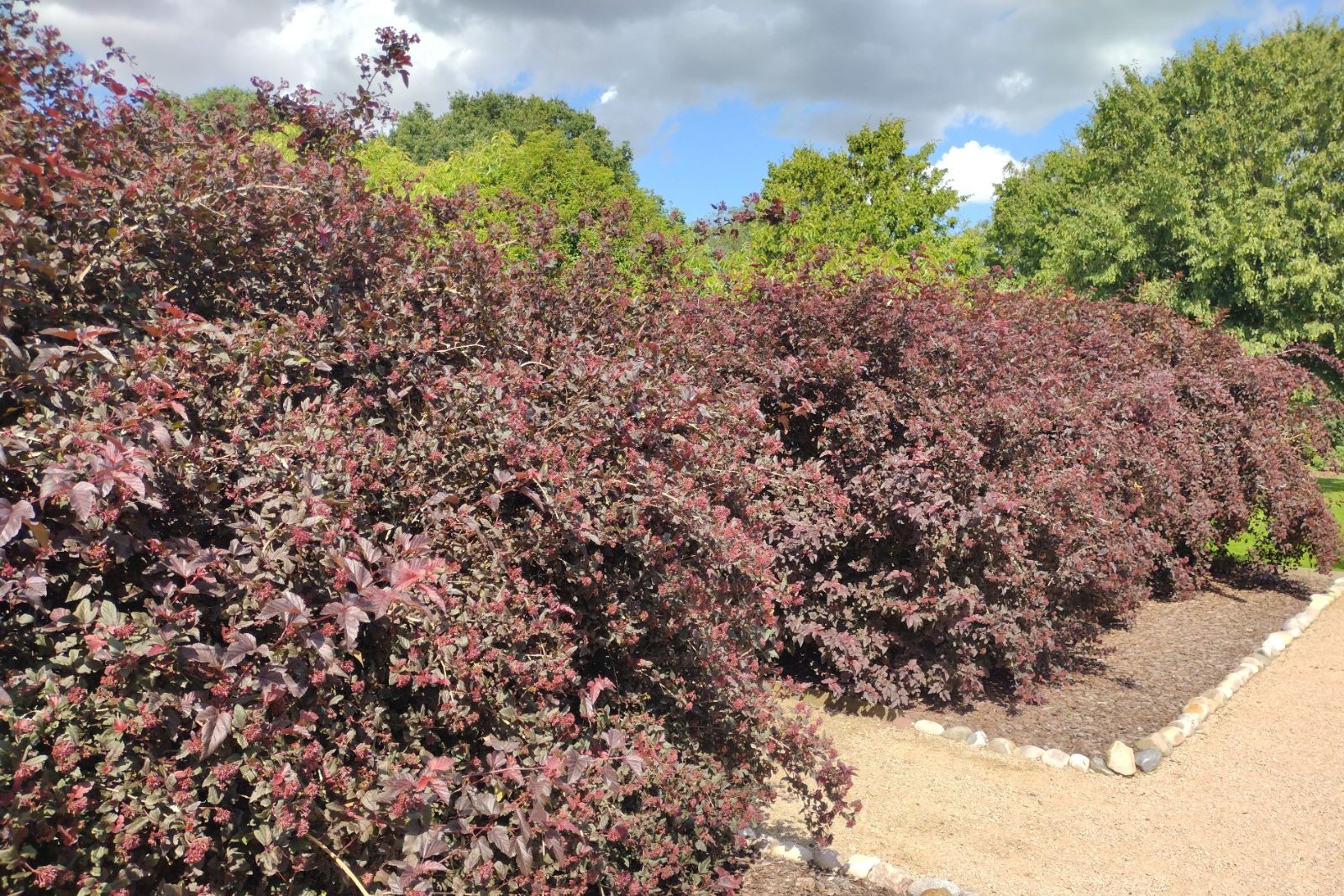Physocarpus opulifolius
Credits
Article from Bean's Trees and Shrubs Hardy in the British Isles
Recommended citation
'Physocarpus opulifolius' from the website Trees and Shrubs Online (treesandshrubsonline.
Genus
Synonyms
- Spiraea opulifolia L.
- Neillia opulifolia (L.) Brewer & Watson
Infraspecifics
A deciduous shrub 6 to 10 ft high, occasionally much more in diameter; bark glabrous, peeling. Leaves usually broadly ovate and three-lobed, sometimes only very slightly lobed or not at all, doubly toothed, 11⁄2 to 3 in. long and from half to fully as wide, glabrous; stalk 1⁄4 to f in. long. Flowers numerous, in hemispherical corymbose clusters 2 in. wide, produced in June at the end of leafy twigs from the previous year’s branches. Each flower is white tinged with rose, 1⁄4 to 1⁄3 in. across, and borne on a slender downy or glabrous stalk. Stamens about thirty, purplish. Fruits consisting of three to five pods 1⁄4 in. long, which are inflated, glabrous or nearly so, and usually carry two egg-shaped seeds.
Native of eastern N. America; introduced, according to Aiton, in 1687, and a common shrub in gardens. The largest I have seen was in Sir A. Buchan Hepburn’s garden at Smeaton, Scotland, which was 30 ft across and 10 ft high. The shrub is a handsome one in blossom, and useful for rough shrubberies where plants are left largely to take care of themselves.
From the Supplement (Vol. V)
cv. ‘Dart’s Gold’. – Perhaps an improvement on ‘Luteus’, holding its colour well into the summer. Put into commerce by the Darthuizer Nurseries, Holland.




